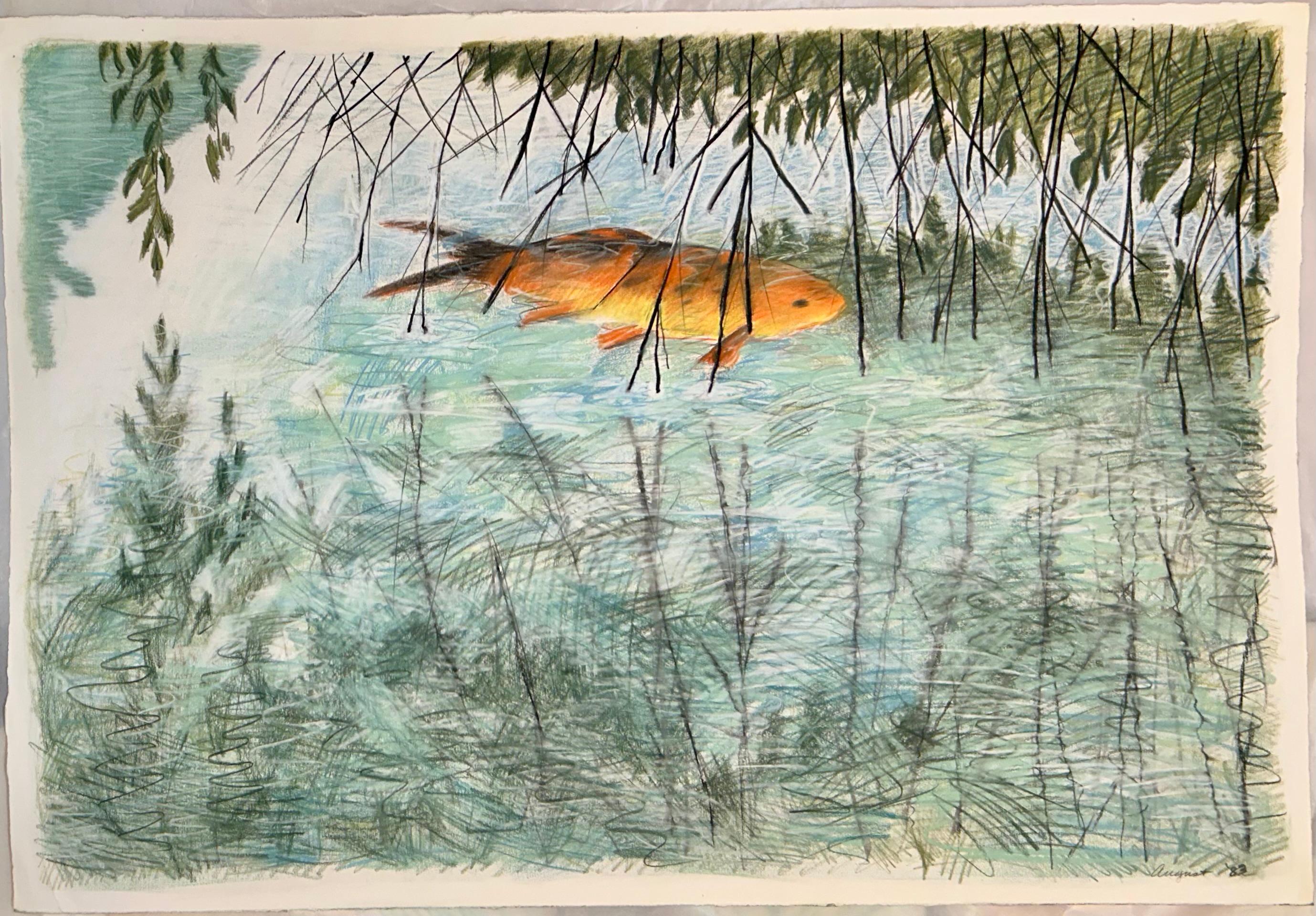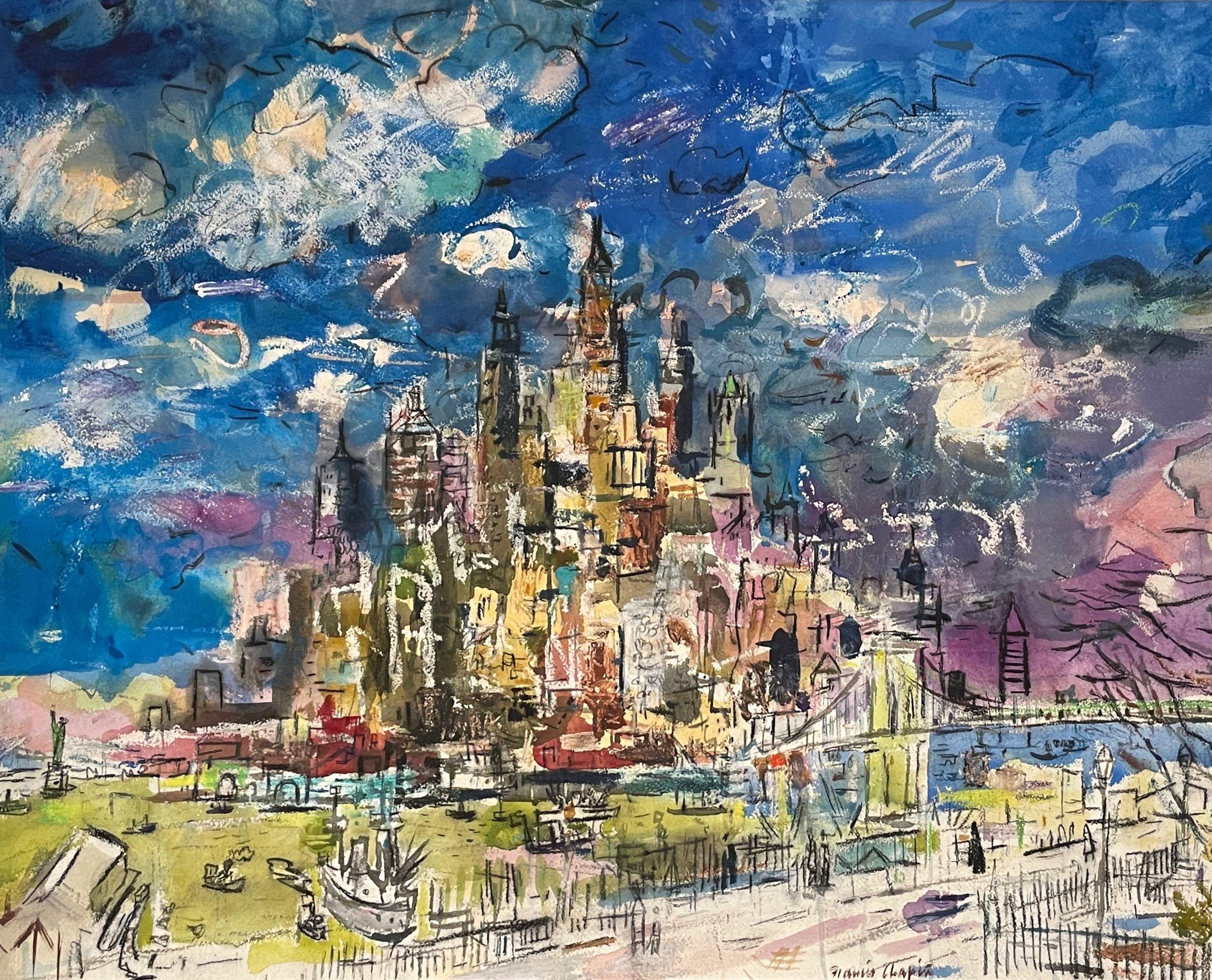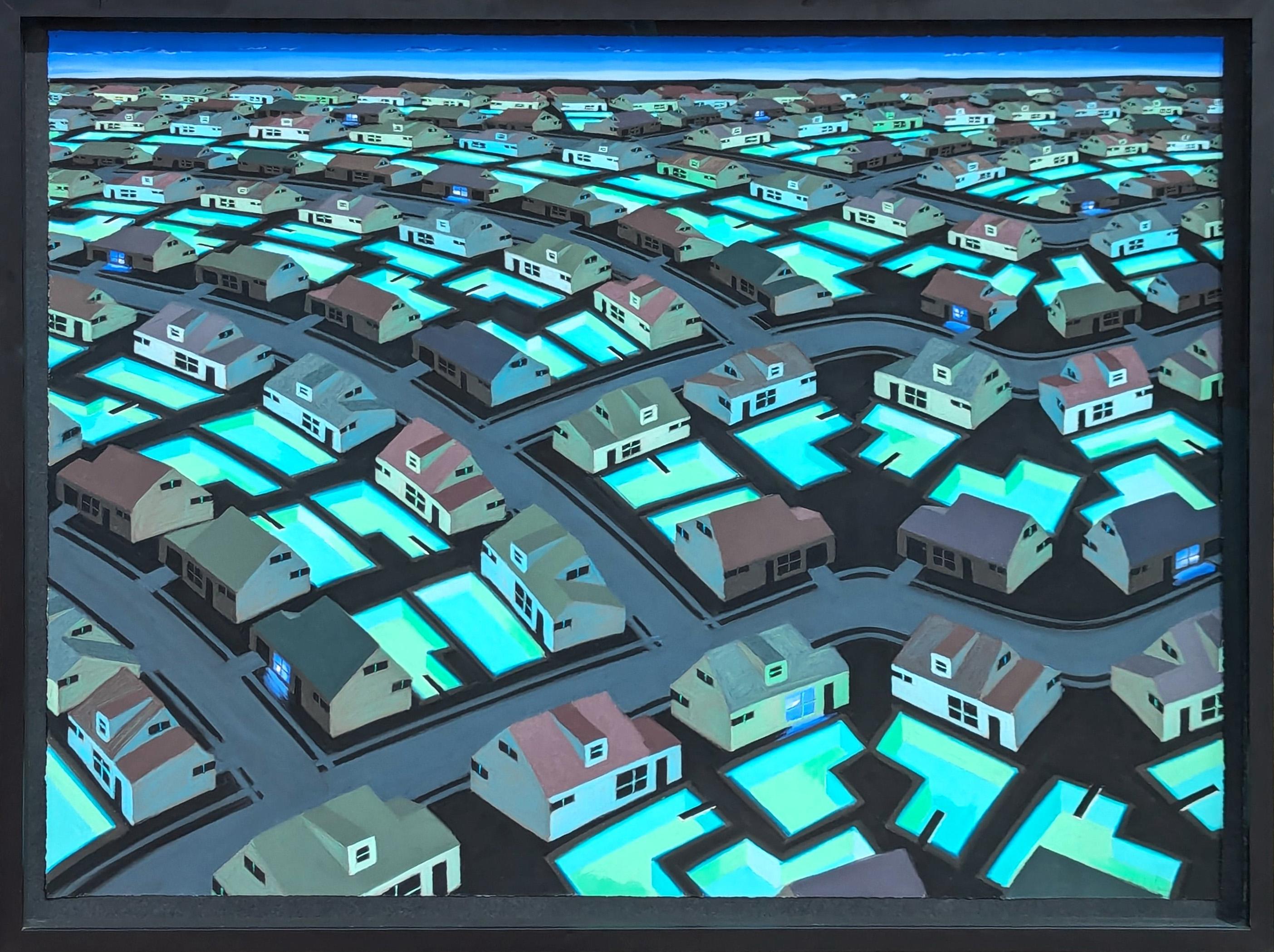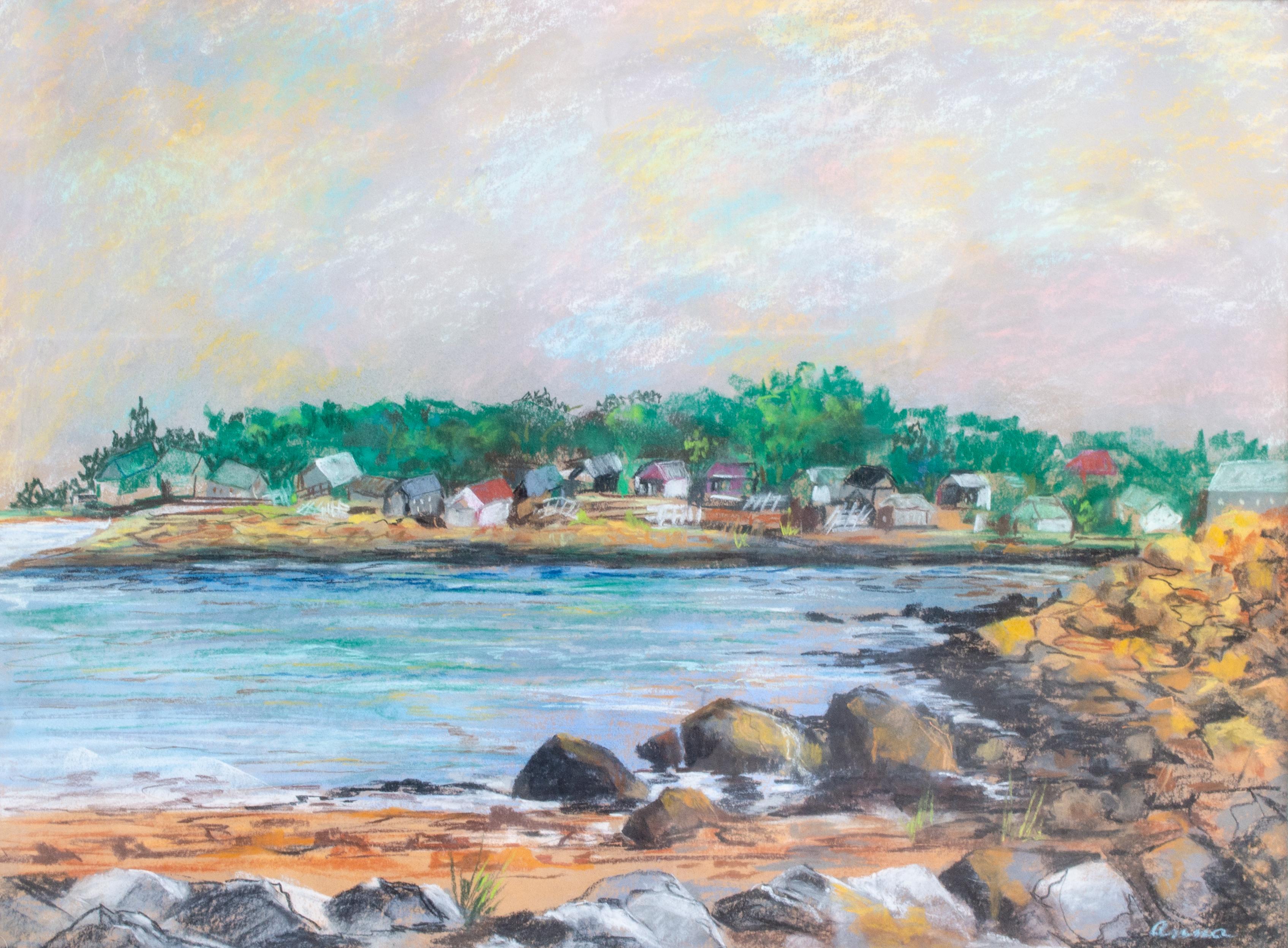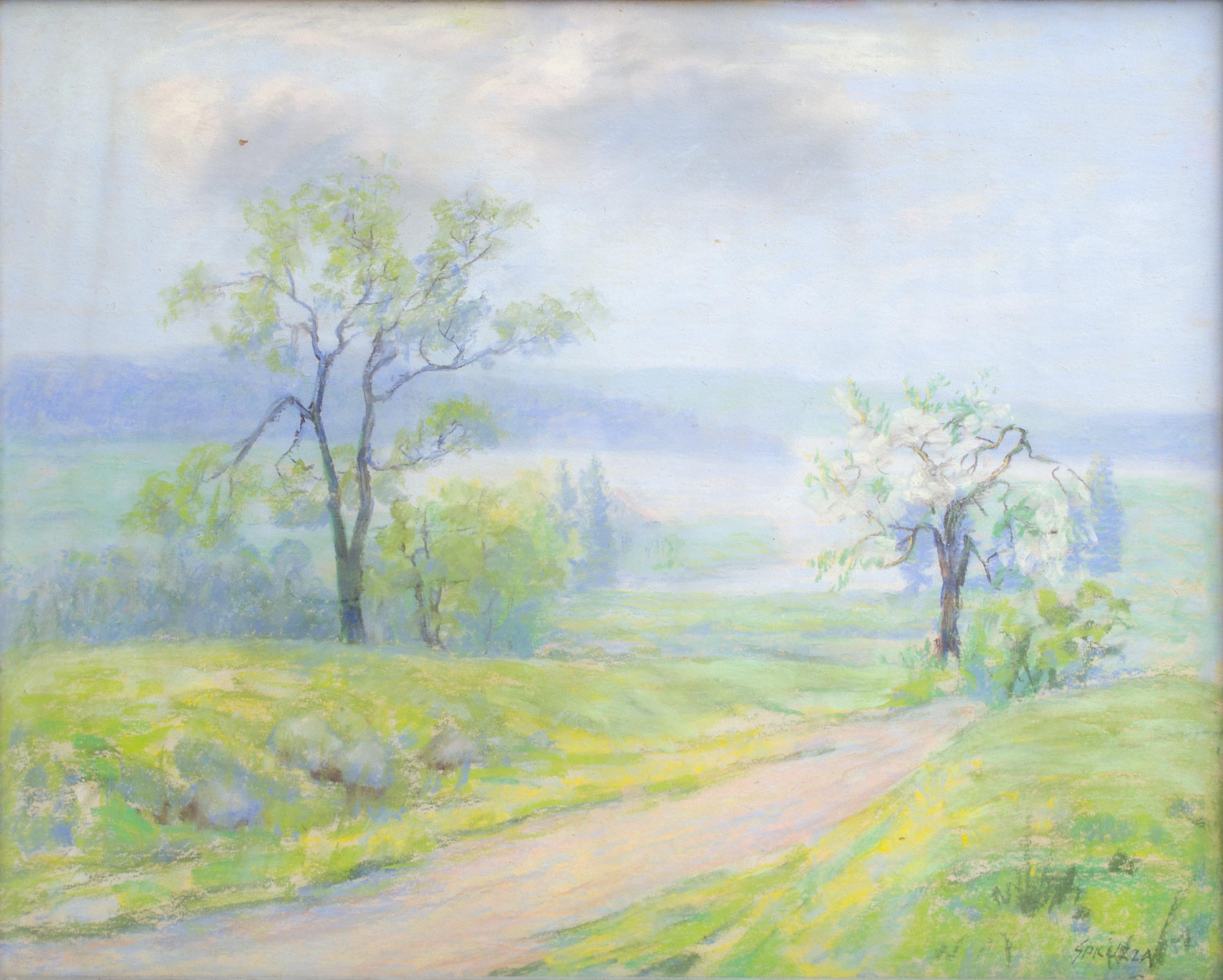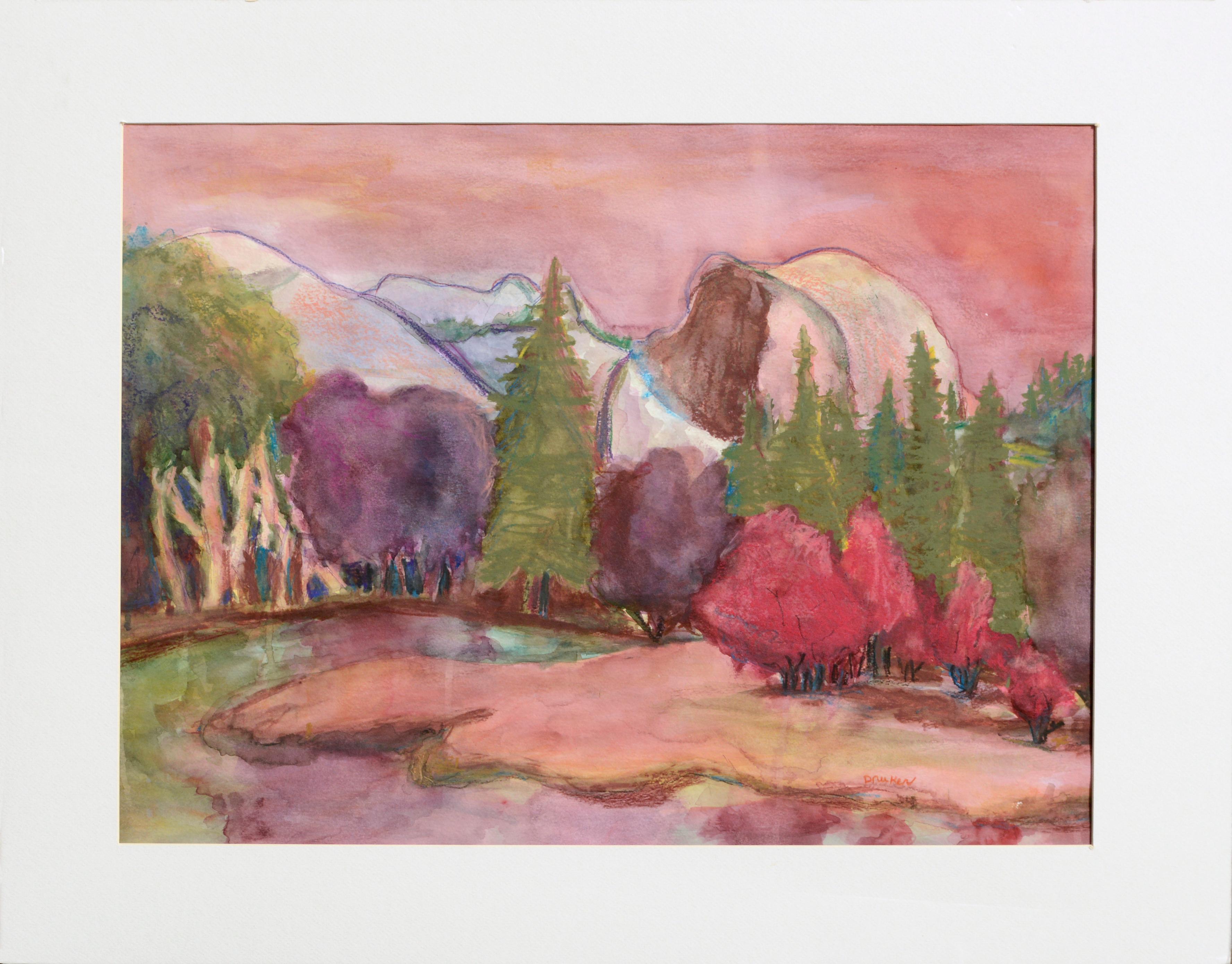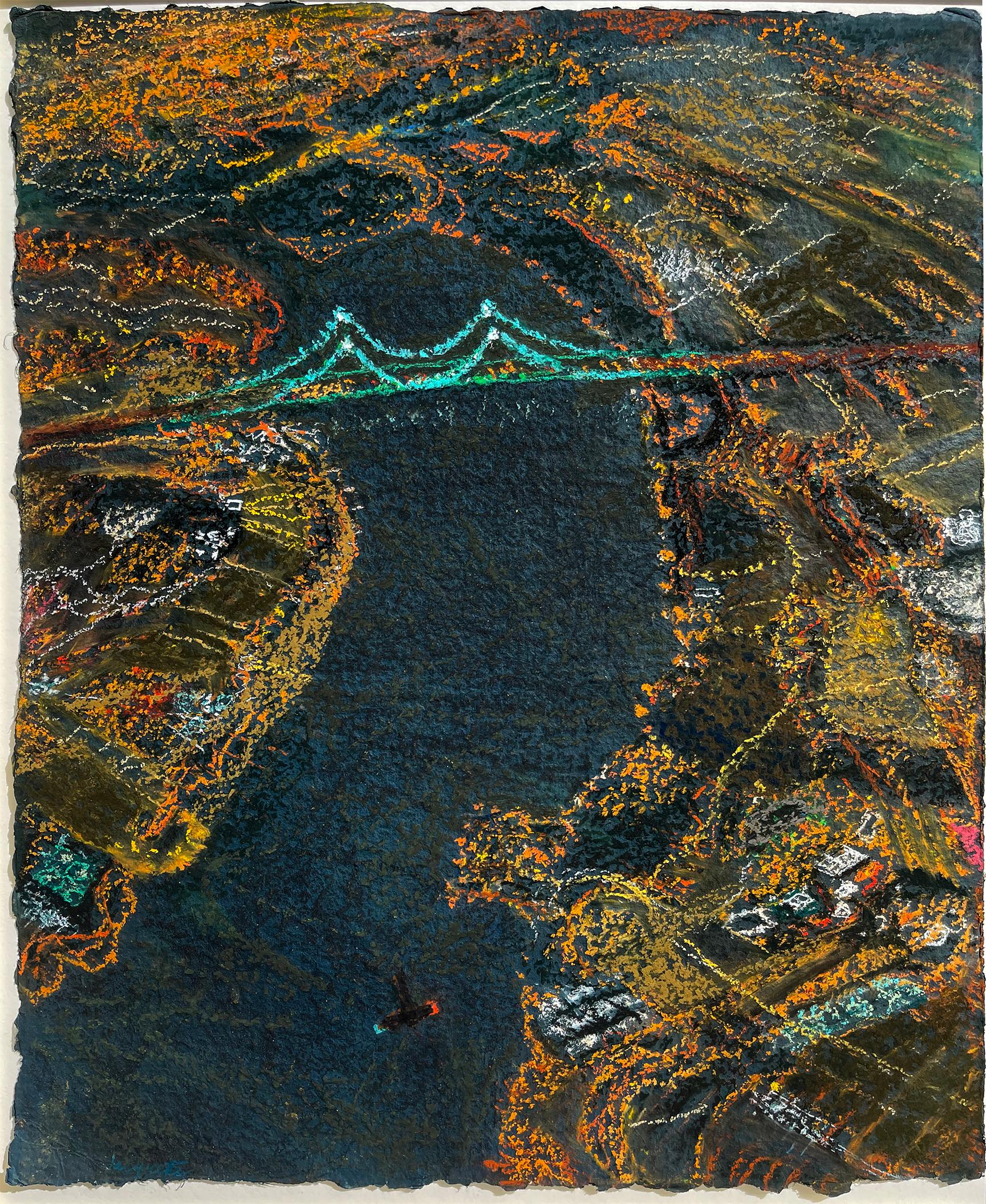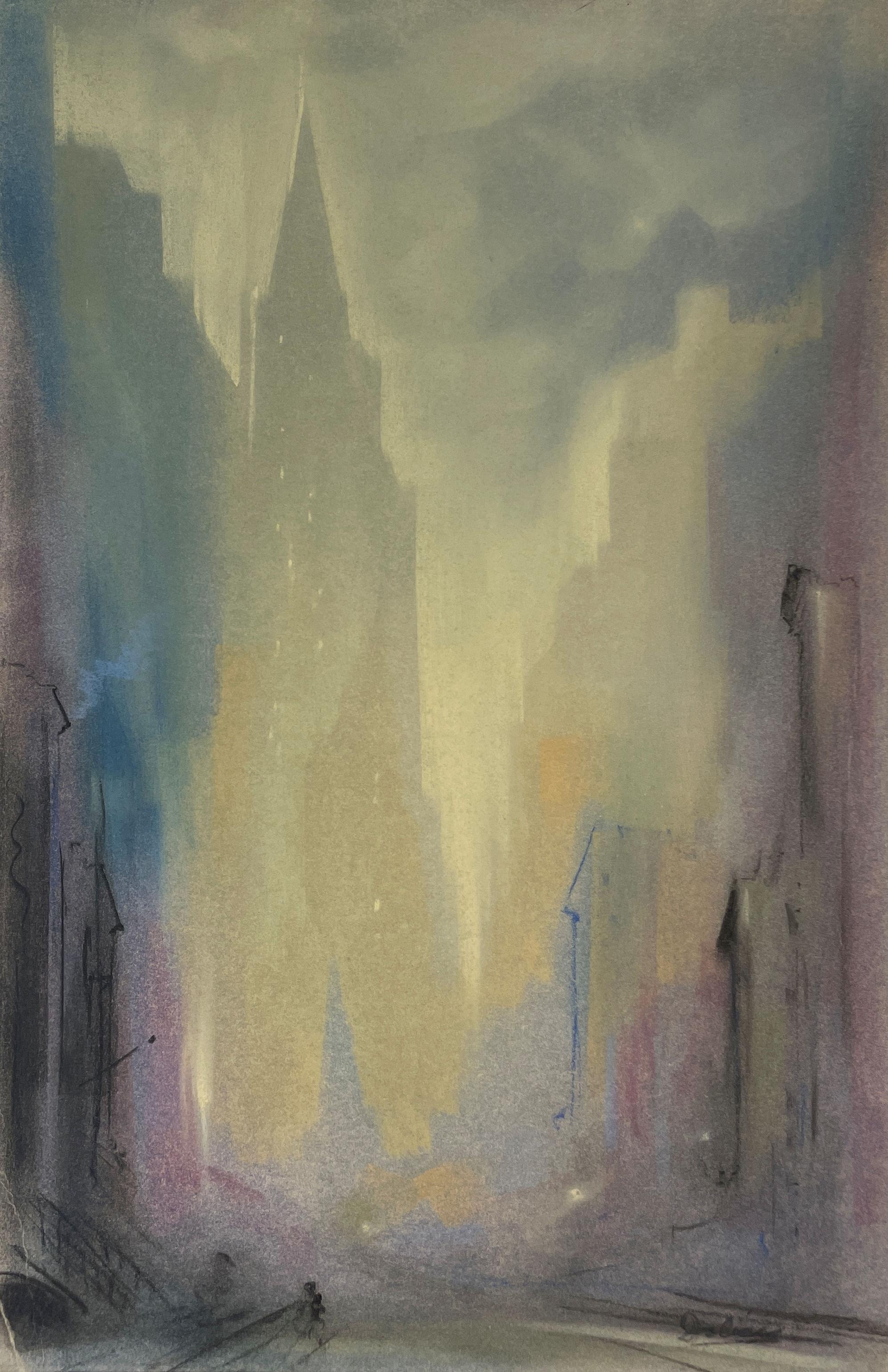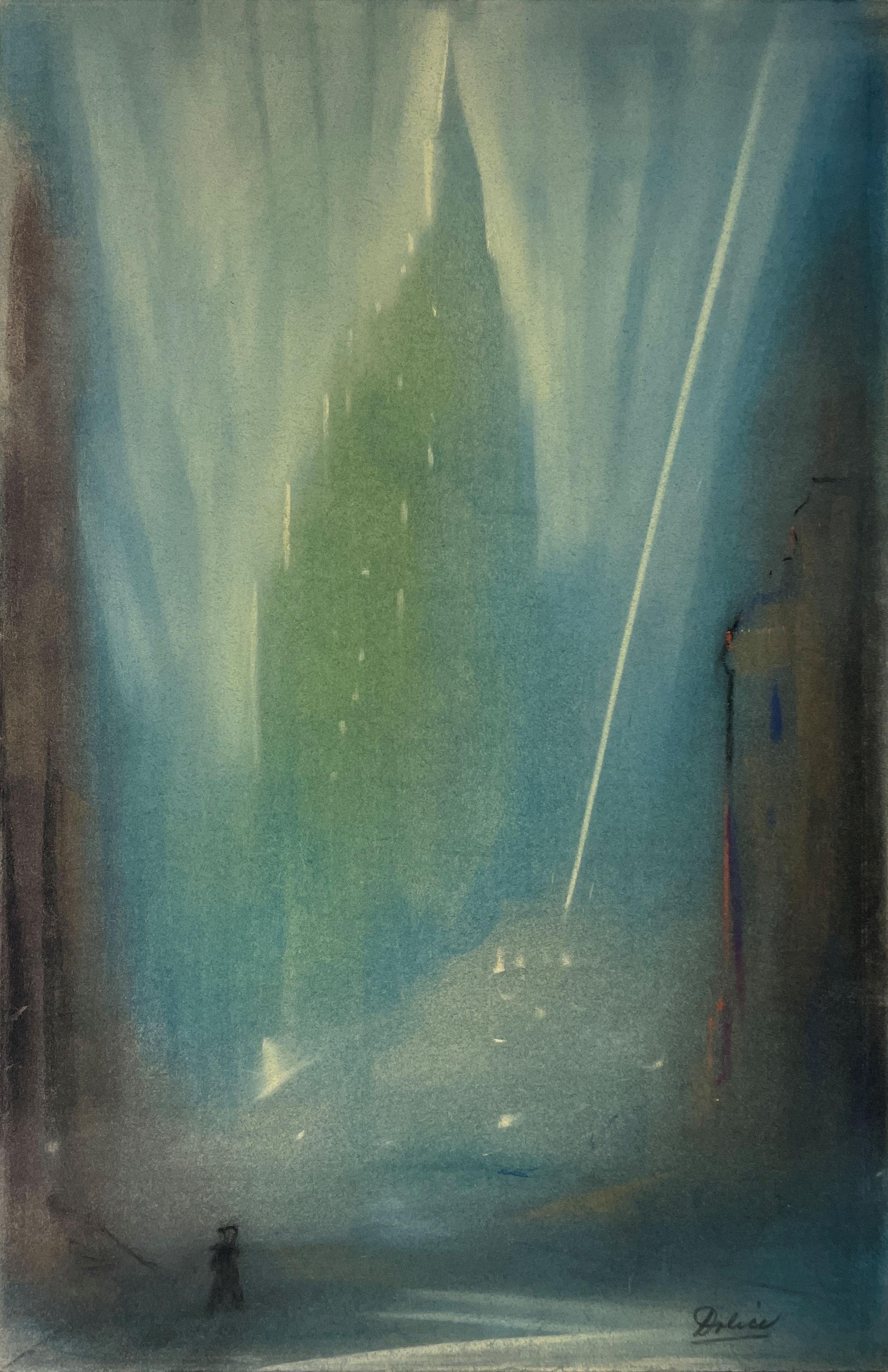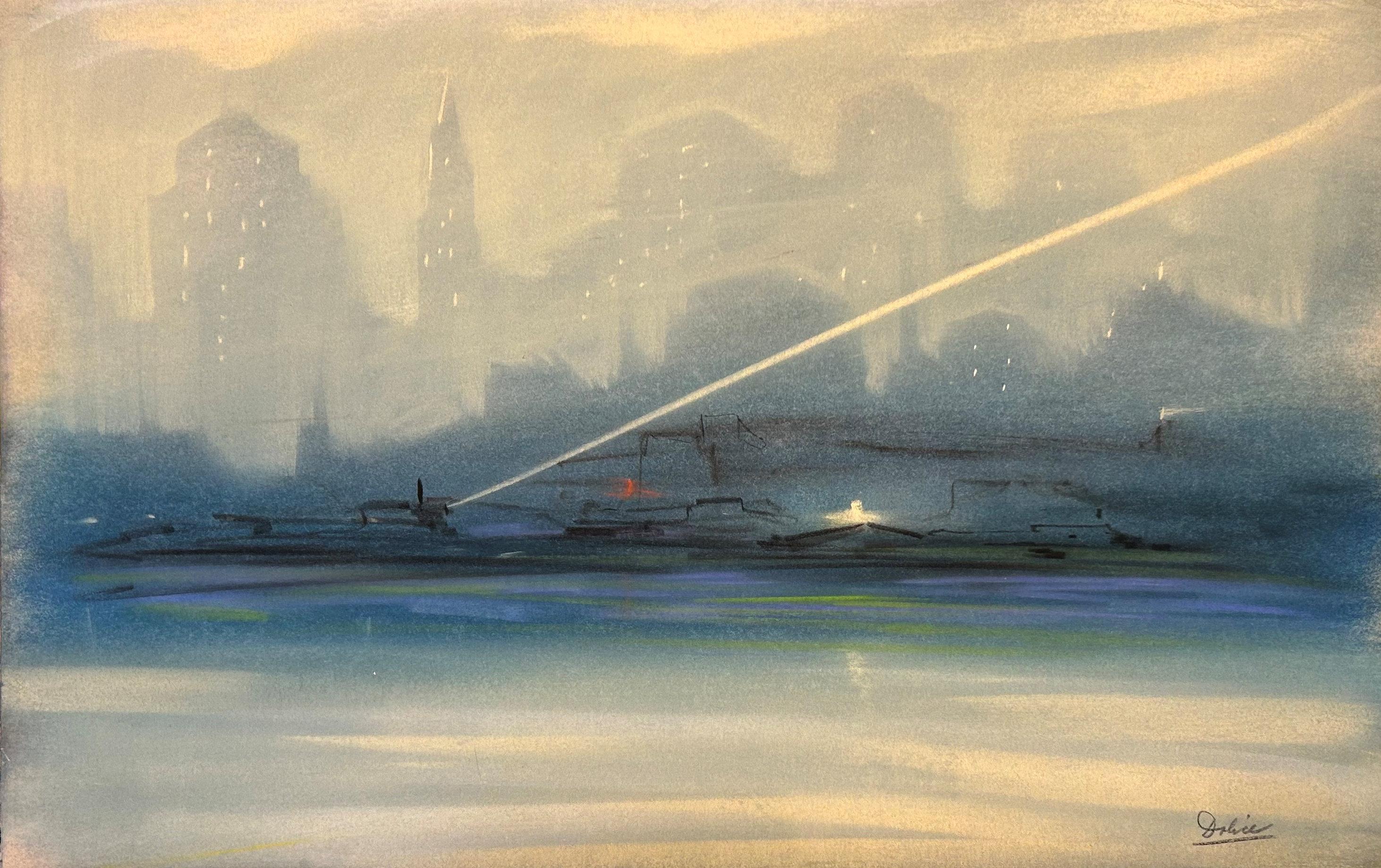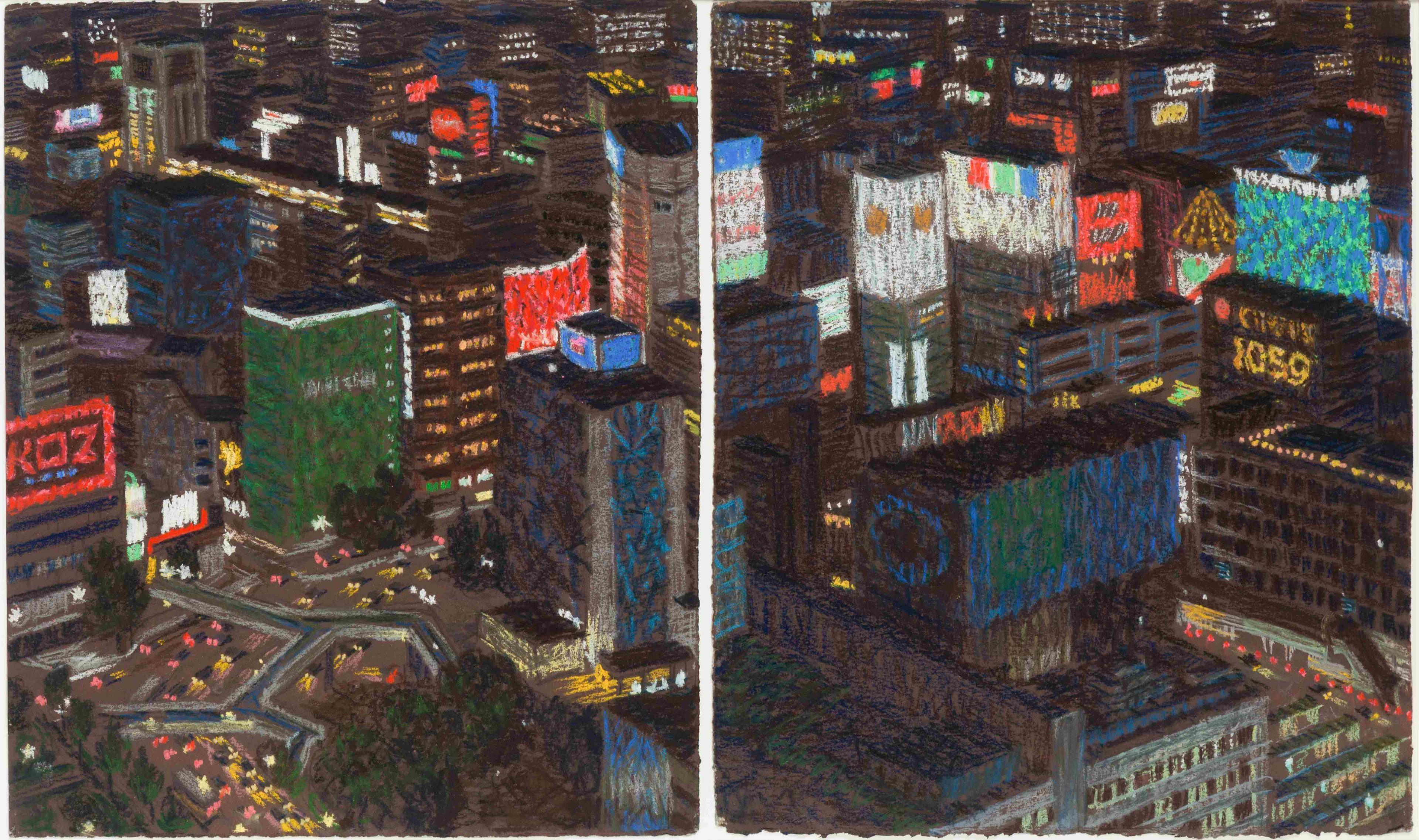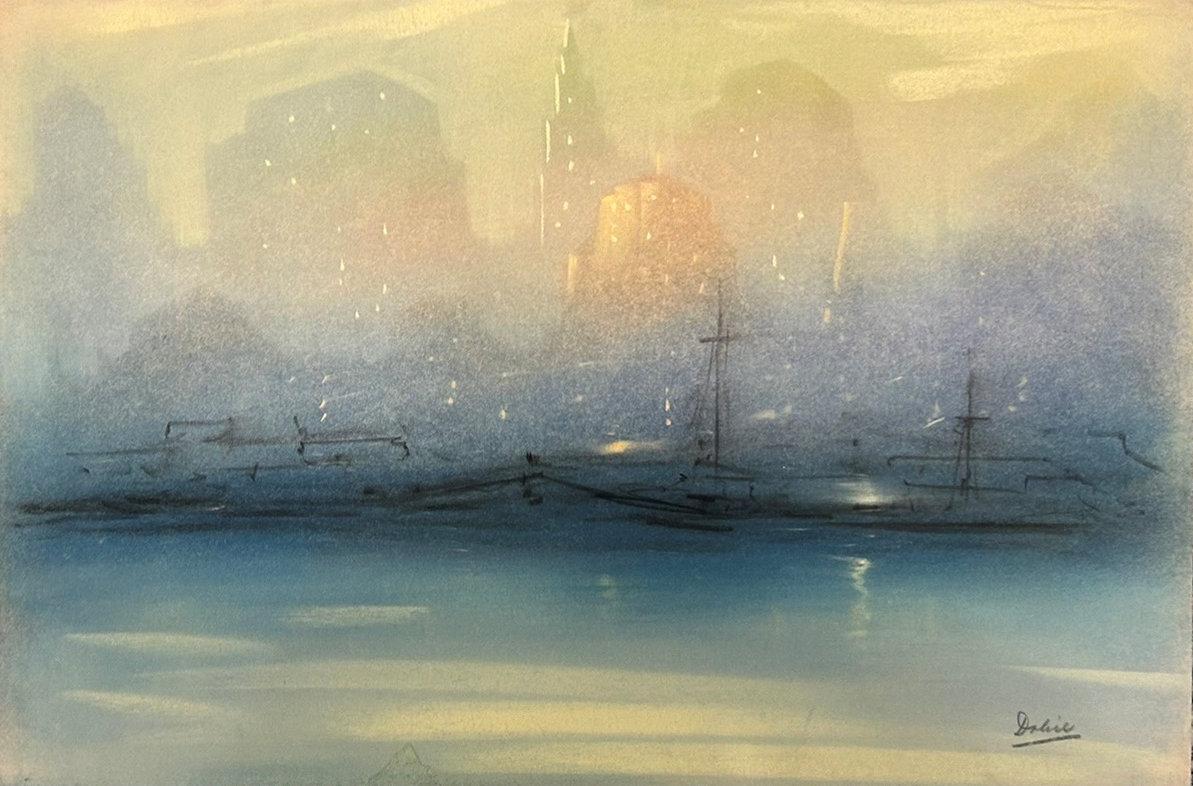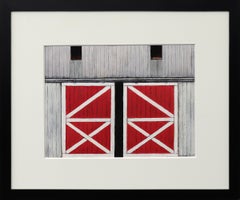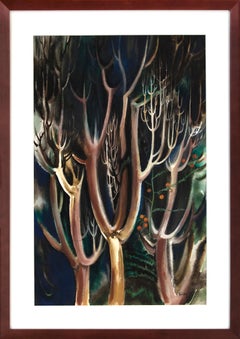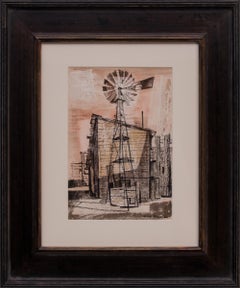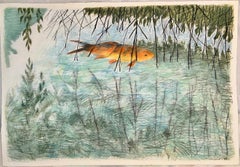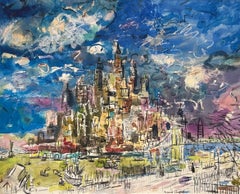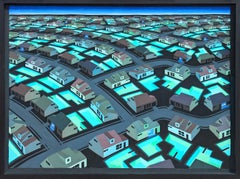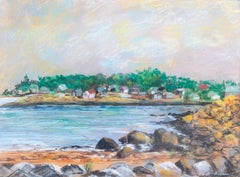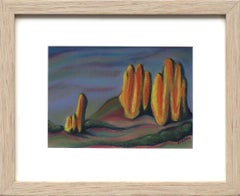
Garden of the Gods, Colorado Springs Landscape, Vintage Modernist Pastel Drawing
Video Loading
Want more images or videos?
Request additional images or videos from the seller
1 of 19
Sushe FelixGarden of the Gods, Colorado Springs Landscape, Vintage Modernist Pastel Drawing1987
1987
About the Item
- Creator:Sushe Felix (American)
- Creation Year:1987
- Dimensions:Height: 10.5 in (26.67 cm)Width: 13 in (33.02 cm)Depth: 0.75 in (1.91 cm)
- Medium:
- Movement & Style:
- Period:
- Framing:Frame IncludedFraming Options Available
- Condition:very good to excellent condition.
- Gallery Location:Denver, CO
- Reference Number:Seller: 266181stDibs: LU27311445912
About the Seller
5.0
Gold Seller
Premium sellers maintaining a 4.3+ rating and 24-hour response times
Established in 1979
1stDibs seller since 2013
286 sales on 1stDibs
Authenticity Guarantee
In the unlikely event there’s an issue with an item’s authenticity, contact us within 1 year for a full refund. DetailsMoney-Back Guarantee
If your item is not as described, is damaged in transit, or does not arrive, contact us within 7 days for a full refund. Details24-Hour Cancellation
You have a 24-hour grace period in which to reconsider your purchase, with no questions asked.Vetted Professional Sellers
Our world-class sellers must adhere to strict standards for service and quality, maintaining the integrity of our listings.Price-Match Guarantee
If you find that a seller listed the same item for a lower price elsewhere, we’ll match it.Trusted Global Delivery
Our best-in-class carrier network provides specialized shipping options worldwide, including custom delivery.More From This Seller
View AllAmerican Modernist Oil Stick Drawing: Landscape of Gray Barn Red Sliding Doors
Located in Denver, CO
This stunning oil stick on paper titled "Barn Side with Sliding Doors" by renowned American artist George Vander Sluis (1915-1984) depicts a serene...
Category
1980s American Modern Figurative Paintings
Materials
Paper, Oil Pastel
1940s Modernist Trees Watercolor Painting, Framed Vertical Earth Tone Landscape
By Richard Sorby
Located in Denver, CO
This captivating Modernist watercolor painting of a serene forest scene by Richard Sorby (1911-2001) beautifully captures the essence of nature through a minimalist and expressive lens. Painted in the 1940s, the piece features stylized trees in bold, dark hues of green, blue, and black, complemented by earthy tones of brown, orange, and white. The watercolor on paper is signed by the artist in the lower right corner and beautifully framed with archival materials. The outer dimensions of the piece measure 26 ½ x 18 ½ x 1 inches, with the image size itself being 22 ¾ x 14 ¾ inches.
About the Artist:
Richard Sorby, a Colorado-based artist, was renowned for his distinctive modernist style, blending abstraction with representational themes. Sorby earned his Bachelor of Fine Arts degree from Colorado State College of Education (now the University of Northern Colorado) in 1937 and went on to study under influential mentors, including Vance Kirkland and William Joseph Eastman...
Category
1940s American Modern Landscape Drawings and Watercolors
Materials
Watercolor, Archival Paper
The Cliff, Abstract Colorado Landscape, 1940s American Modernist Pastel Drawing
By Eric Bransby
Located in Denver, CO
This stunning artwork features an expressive blend of vibrant green, orange, blue, and purple tones, capturing the dynamic beauty of Colorado’s mountainous terrain. Created by renown...
Category
1990s Abstract Abstract Drawings and Watercolors
Materials
Oil Pastel, Pastel, Archival Paper
Windmill on the Plains, 1940s Watercolor & Ink Mixed Media Modernist Landscape
By Jenne Magafan
Located in Denver, CO
"Windmill on the Plains" is a captivating watercolor and ink on paper painting by 20th century Colorado artist Jenne Magafan. Created in the 1940s, this work depicts a large windmill...
Category
1940s American Modern Landscape Drawings and Watercolors
Materials
Paper, Ink, Watercolor
Hopi Village on First Mesa, Arizona: Red, Blue, Orange Mixed Media Landscape Art
Located in Denver, CO
This striking mixed-media artwork, titled Walpi #9 (Hopi Village on First Mesa, Arizona), is a masterful combination of watercolor, ink, and charcoal on paper by Bert Van Bork...
Category
1990s American Modern Landscape Drawings and Watercolors
Materials
Charcoal, Ink, Watercolor
Second Mesa Hopi Pueblo Arizona Multicolored Southwest Mixed Media Landscape Art
Located in Denver, CO
"Second Mesa (Hopi Pueblo, Arizona)" is a stunning mixed media artwork by Bert Van Bork (1928-2014), created using watercolor, ink, and charcoal on paper...
Category
1980s American Modern Landscape Drawings and Watercolors
Materials
Charcoal, Archival Ink, Watercolor
You May Also Like
Koi, golden fish, pastel drawing water, nature, abstract reflection
By Audrey Anastasi
Located in Brooklyn, NY
These recently discovered 1983-84 oversize pastels on archival papers were created working quickly, in pastel. The series shows the last existing obs...
Category
2010s American Modern Animal Drawings and Watercolors
Materials
Pastel, Mixed Media, Archival Paper
A Dynamic Mid-Century Modern Manhattan Scene, New York City by Francis Chapin
By Francis Chapin
Located in Chicago, IL
A Large, Dynamic 1950s Mid-Century Modern Watercolor of Lower Manhattan, New York City by Noted Chicago Artist, Francis Chapin (Am. 1899-1965). The image is watercolor, pastel and c...
Category
Mid-20th Century American Modern Landscape Paintings
Materials
Watercolor, Archival Paper, Charcoal, Pastel
Contemporary Mid Century Inspired Blue & Green Toned Neighborhood Aerial Pastel
Located in Houston, TX
Mid century inspired aerial landscape pastel drawing by contemporary artist R. Michael Wommack. The work features a birds eye view of a planned neighborhood at night with glowing swi...
Category
2010s American Modern Landscape Drawings and Watercolors
Materials
Paper, Pastel
Lovely Impressionist Coastal Scene of New York in Pastel
Located in New York, NY
Untitled (Coastal New York)
Pastel on paper
17 1/2 x 23 1/2 in.
Framed: 24 1/2 x 30 in.
Signed lower right
Category
20th Century American Modern Landscape Drawings and Watercolors
Materials
Paper, Pastel
Beautiful large impressionist pastel by Francesco Spicuzza
By Francesco Spicuzza
Located in New York, NY
Francesco Spicuzza (American, 1883-1962)
Untitled Landscape, 20th century
Pastel on paper
Sight size: 24 x 30 in.
Framed: 26 1/4 x 32 3/8 in.
Signed lower right: Spicuzza
Italian-born Francesco Spicuzza was primarily a Wisconsin painter who did portraits, still-lives and local landscapes. He spent the first part of his life in near-poverty to become a painter. An eternal optimist, in 1917, the artist reported: "I am happy and my only ambition now is to paint better and better until I shall have reached the measure of the best of which I am capable." (Spicuzza, 1917, p. 22). His predilection for beach scenes germinated early: reportedly, the five-year-old boy first drew the outlines of his father's fishing boat in the sand on the seashore near their home in Sicily. After setting himself up as a fruit peddler in Milwaukee, Spicuzza's father sent for his family when Francesco was eight years old. For the following six years the boy was unable to attend school because of his job in his father's fruit and vegetable business. The poor lad suffered a caved-in shoulder from carrying a heavy wooden crate.
The young Spicuzza was aided by moral and financial support from a sympathetic Milwaukee businessman named John Cramer, publisher and editor of the Evening Wisconsin, who raised Spicuzza's salary as a newspaper assembler so that he could attend school. In 1899 or 1900, Spicuzza began studying drawing and anatomy under Robert Schade (1861-1912), a painter of panoramas who had been trained in Munich under Carl Theodor von Piloty. Spicuzza was also taught by Alexander Mueller (1872-1935), a product of the Weimar and Munich academies. Mueller realized Spicuzza was a colorist and encouraged that orientation (Madle, 1961). Spicuzza found it beneficial to accept an apprenticeship in a lithographic studio for $8 a week, which demanded most of his time. During the St. Louis Universal Exposition in 1904, still a struggling student, Spicuzza attended the fair, thanks to Cramer. It was not long before Spicuzza received a twenty-five dollar portrait commission, and this inaugural success led to new commissions and allowed him to continue as a painter.
The earliest influences in his work appear to be from Edward H. Potthast and Maurice Prendergast, though Spicuzza never mentioned either artist. Already in August 1910, Spicuzza was described in a newspaper as "one of the most talented of Milwaukee's rising workers." He undoubtedly received lasting inspiration from his one summer study period in 1911 with John F. Carlson at the Art Students League's Summer School in Woodstock, New York. Certainly Spicuzza would have picked up spontaneity in handling the brush from Carlson. Although he executed numerous still-lives and an occasional religious work, Spicuzza is best known for his Milwaukee beach scenes populated with frolicking bathers in multi-colored attire, not unlike the images of Potthast, who used a similar technique. Many of these are small, preparatory works on canvas board executed between 1910 and 1915. Frequently with even greater animation than Potthast, Spicuzza produced moving images of youthful energy and uninhibited child's play. These beach genre scenes reflect the attitude of American impressionists who depicted the more pleasant side of life.
Spicuzza manipulated a successful balance of rich pigment applied in varying degrees of impasto texture with subtle nuances of hue. Working all'aperto, he sought "the soft enticing shades of yellow, blue, green, pink and lavender . . . to get the effects of bright glistening summer air." (L.E.S., n.d.). As a painter whose color not only derived from direct observation but also from a personal theory of color symbolism, Spicuzza traded the linear approach of lithography for dynamic patches of brilliant color. Like Prendergast, he would often tilt the angle of the picture plane to bring the viewer's position above the scene.
Spicuzza was unable to enter the 1913 Armory Show or the Panama-Pacific International Exposition two years later but he did submit work to the annual exhibitions of the Pennsylvania Academy of the Fine Arts and those of the Art Institute of Chicago. His first important award was the bronze medal presented by the St. Paul Institute in 1913, which was followed by the silver medal two years later. Before long, Spicuzza had acquired a greater sense of security in his profession and was described by a writer in International Studio (April 1917) as "an independent artist with an assured future. His pastels and water-colours are poetic and joyous bits of nature with a genuine out-of-door feeling." In 1918, his Spirit of Youth, exhibited at the National Academy of Design, sold for $112.50. Four years later, the artist achieved his greatest local recognition by winning the gold medal from the Milwaukee Art Institute.
Spicuzza spent a great deal of time painting en plein air and by 1925 he began summering at Big Cedar Lake, near West Bend, Wisconsin to gather his subject matter. Easter Morning (1926) owes something to the Symbolist movement, with its figure of Christ appearing over a seascape. During the difficult era of the Depression, patrons came to Spicuzza's aid and during the 40s, he taught housewives, businessmen and students at the Milwaukee Art Institute, the Milwaukee Art Center, and in his private studio. In the following decade, although his kind of art was no longer popular in the "make-it-or-break-it" New York gallery world, Spicuzza enjoyed regular patronage and sales. His beach scenes became more static and he would experiment with modernist techniques. Spicuzza died at the age of seventy-eight.
Sources:
L.E.S., "Do Colors Change a Person's disposition? Experiments of a Milwaukee Artist...
Category
20th Century American Modern Landscape Drawings and Watercolors
Materials
Paper, Pastel
Half Dome in Pastel Colors, Yosemite National Park Fauvist Landscape Watercolor
By Karen Druker
Located in Soquel, CA
Bright Fauvist landscape of Half Dome in Yosemite National Park, with beautiful use of color by Karen Druker (American, 1945). Signed "Druker" in the lower right corner. Presented in...
Category
21st Century and Contemporary American Modern Landscape Drawings and Wat...
Materials
Paper, Pastel, Watercolor
Recently Viewed
View AllMore Ways To Browse
Garden Drawings
Vintage Garden Drawing
Felix Vintage
Spring Landscape Watercolor
Modernist Pastel
Watercolor Landscapes Colorado
Pastel Colorado
Vintage Pastel Landscape
7 Gods
Garden Of The Gods
Ralph Holmes On Sale
Richard Leitch
Rosemary Ziar
Sally Bookman
Schranz Painting
Thomas Hartley Cromek
Virginia Ingram
Werner Drewes On Sale
